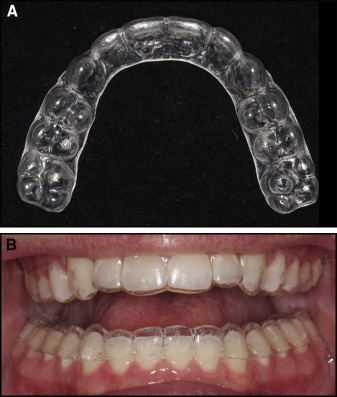A tremendous amount of information available to the public suggests that do-it-yourself (DIY) dentistry is something to be considered. In general terms, this includes DIY extractions, partial and full dentures, crowns, and bridges; with regard to orthodontics in particular, there are DIY aligners, gap bands, and clear retainers. All that is required is a consumer who is a DIY enthusiast and who is willing to pay a fee and then put something in his or her mouth and hope for the best. By definition, these DIY products and services are not provided by licensed dentists or specialists and are not considered consistent with the dental practice acts of all 50 states. Most of all, they do not generally consider the safety, effectiveness, and true costs of the procedures.
Recently, much has appeared in the popular media about the accomplishments of Amos Dudley. Mr Dudley is a young college student studying digital design at the New Jersey Institute of Technology. Unhappy with the arrangement of his teeth, he developed a rather ingenious DIY system for straightening his maxillary teeth. He took his own impressions and then used available technology and software to produce a series of clear aligners. In doing so, he had access to a high-quality laser scanner, a 3-dimensional printer, and a thermoplastic vacuum-forming machine, along with computer-aided design and animation software. He found that his DIY treatment was successful, and he spent only about $60 for the materials to construct the devices. Reflecting on his experience, he admitted that he did not have the knowledge and skills of a trained orthodontist nor was he interested in making aligners for other people. He also indicated that people should not attempt the same procedure themselves.
Narrowing this discussion to clear retainers, the DIY opportunity is simple. A consumer contacts a company that supplies an at-home impression kit, usually containing impression material, plastic trays, and instructions; a Web site is often available for video instructions. The consumer takes his own impressions and sends them off to the company, eventually receiving the clear retainers and a plastic storage case; the cost is generally about $100 to $150 for a set (maxillary and mandibular) of clear retainers.
This all seems fairly simple, but simple things are not always easy. For example, it is a simple matter to quit smoking; you just stop. But it is not easy to do so. In the case of treatments that involve taking DIY impressions, the question to be raised is whether DIY enthusiasts can take impressions with sufficient quality for producing retainers. Anecdotal evidence argues that most cannot.
On the basis of educational experience, one thing students learn during 4 years of dental school is how to take dental impressions of reasonable quality for the intended purpose. In the 2 to 3 years of orthodontic training, students learn to produce higher-quality impressions for display and appliance construction. It is difficult to believe that novices can perform at the same level, no matter their level of enthusiasm for doing so.
Also, reports are starting to emerge demonstrating that the DIY impression experience does not always produce the desired appliance. In the example shown here, a young patient was treated successfully and was given clear retainers for retention. Later, the patient reported that “the dog ate the retainers”; he called his practitioner’s office and was told that the cost of replacement would be $195. The patient decided to seek a DIY alternative on the Internet. Subsequently, he paid a $125 fee and took his own impressions, and the company provided a new set of clear retainers ( Fig ). Although the maxillary retainer fit the teeth fairly well, it did not extend to the second molars; this would allow those teeth to supererupt and affect the occlusion. The mandibular retainer did not fit well at all ( Fig , B ). The patient tried unsuccessfully to bite it into place, but that made his teeth hurt, so he discontinued wearing it altogether. Defects in the retainers were most likely the result of a lack of extension of the maxillary impression and distortion of the mandibular impression (movement of the tray during the setting of the impression material, removing the impression before the material was set, pulling the impression material out of the tray during withdrawal, and so on). Realizing that the DIY clear retainers would not be adequate to retain his teeth, the patient finally contacted the original orthodontist for replacements. New retainers were made, and they are now being worn appropriately—and being kept away from the family dog when not in use. The moral of this story is that good treatment costs money, and bad treatment costs money, but bad treatment will cost even more if it must be redone. Patients and society cannot afford bad treatment.





